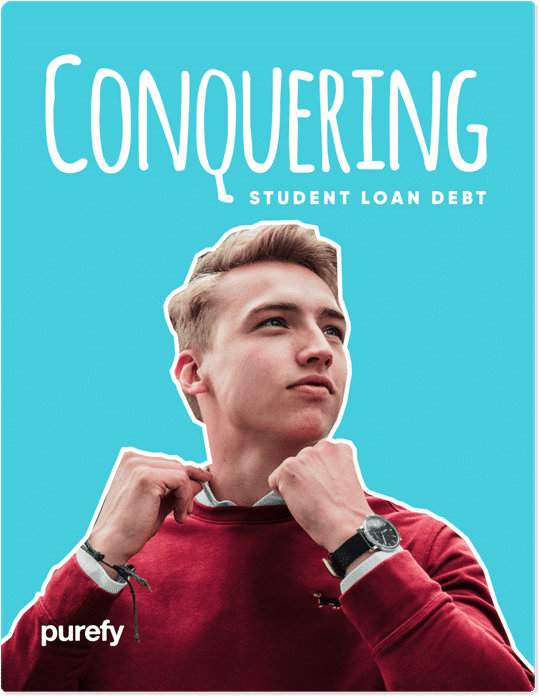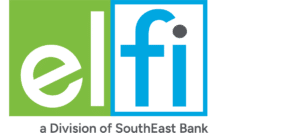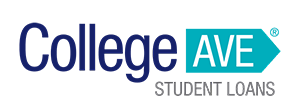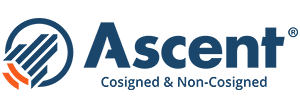Since March 2020, federal student loan borrowers haven’t had to worry about their payments. That’s scheduled to end in August, so you may be panicking about affording your payments.
Luckily, there are multiple repayment options that could make your payments more manageable. But which federal student loan repayment plan is best? There’s no one right answer that applies to all borrowers; which plan is best is dependent on your goals and financial situation.
Federal Student Loan Repayment Options
According to the Pew Research Center, approximately 20% of federal loan borrowers defaulted on their debt before the COVID-19 student relief measures went into effect. That means millions of borrowers could potentially be in default once student loan repayment begins in 2022.
If your loans were current, but you can no longer afford your payments, you’re at risk of entering default — and dealing with all of the consequences that come with it.
If you can’t afford your current payments, you may be eligible for one of the alternative repayment plans available for federal loans.
| Standard | Income-Driven Repayment | Extended | Graduated | Income- Sensitive | |
| Eligible Borrowers | All federal loan borrowers | Federal Direct loan borrowers | Direct borrowers with more than $30,000 in student loans | All federal loan borrowers | FFEL program borrowers |
| Loan Term | 10 years (up to 30 for consolidation loans) | 20 or 25 years | 25 years | 10 years (up to 30 for consolidation loans) | 15 years |
| Monthly Payment | Fixed | Percentage of discretionary income | Fixed or graduated | Increase every two years | Adjusted based on income |
Standard Repayment
When you take out federal student loans, your loans are automatically enrolled in a Standard Repayment Plan. With a Standard Repayment Plan, your loans have fixed monthly payments, and the loan term lasts for 10 years.
The Standard Repayment Plan has the lowest overall cost of all of the loan options, but your payments may be higher than you can afford.
Income-Driven Repayment
For borrowers struggling to keep up with their payments, income-driven repayment (IDR) plans can provide significant relief. With an IDR plan, you can qualify for an extended loan term of 20 or 25 years. Your loan servicer will calculate a new monthly payment for you using your discretionary income, which is based on the federal poverty level for your family size and location.
There are four IDR plans:
- Income-Based Repayment (IBR): If you’re a new borrower on or after July 1, 2014, your payments under IBR will be 10% of your discretionary income, but they will never be higher than they were under a Standard Repayment Plan. Your repayment term will be 20 years.
- Income-Contingent Repayment (ICR): ICR plans have loan terms of 25 years, and your monthly payment is the lesser of 20% of your discretionary income or what you’d pay with a fixed payment over 12 years adjusted for your income.
- Pay As You Earn (PAYE): Your payments with PAYE will be 10% of your discretionary income, but they will never be more than your Standard Repayment Plan payment amount. You’ll make payments for 20 years.
- Revised Pay As You Earn (REPAYE): REPAYE’s monthly payments are based on 10% of your discretionary income, and the repayment term is 20 years for undergraduate loans, and 25 years if any of your loans were used for graduate school.
All four of the IDR plans are qualifying payment plans for Public Service Loan Forgiveness (PSLF).
Even if you don’t qualify for PSLF, there is another way to get forgiveness with IDR plans. If you still have a balance at the end of your IDR plan’s term, the federal government will discharge the remaining amount. And, thanks to new rules put into place, the forgiven amount isn’t taxable as income as long as the loans are discharged before the end of 2025.
[Tip: If you have Parent PLUS Loans or are ineligible for an IDR plan because you have older federal loans, you can take advantage of IDR plans by consolidating your debt with a Direct Consolidation Loan. Once you’ve consolidated your debt, you can enroll in an IDR plan.]
Extended Repayment
The extended repayment plan is only for federal Direct loan borrowers that owe $30,000 or more.
Under this plan, your repayment term is changed to 25 years. Your payments may be fixed or graduated. If they’re graduated, they will start off low, but they’ll increase every two years, regardless of your income.
The extended repayment plan is not a qualifying plan for PSLF.
Graduated Repayment Plan
A graduated repayment plan is for all federal loan borrowers. Your loan term will be 10 years, but borrowers that consolidate with a Direct Consolidation Loan can have up to 30 years to repay their loans.
Under a graduated repayment plan, your payments are initially low, but they increase every two years. Even if your income doesn’t change, your payments will steadily increase.
Graduated repayment is not a qualifying plan for PSLF.
Income-Sensitive Repayment
The Income-Sensitive Repayment plan is for borrowers with loans in the Federal Family Education Loan Program (FFEL).
Although your monthly payments are adjusted based on your income, your loans will be paid off in full within 15 years.
Income-Sensitive Repayment is not a qualifying payment plan for PSLF.
See How Much You Can Save
Student Loan Payoff Calculator
View Details
Collapse
Check how long it will take you to pay off your student loans. Quickly see the effects of lower rates, extra payments, and different terms on your repayment plan.
Results
| Current Payment | w/ extra payment | Difference | |
|---|---|---|---|
| Term | 10 years | — | — |
| Payoff Date | — | — | |
| Total Interest | $16,560 | — | — |
Want to lower your rate to help pay off student loans faster? Check your rate at our top-rated lenders in 2 minutes, with no impact on credit.
Which Federal Student Loan Repayment Plan Is Best?
Borrowers considering an alternative payment plan often ask, “Which federal student loan repayment plan is best?” Unfortunately, there’s no universal answer. Instead, the best plan for you is dependent on the following factors:
- Income: Your income plays a big role in determining your payment plan eligibility and how much you’ll pay each month. IDR plans use your discretionary income — using a formula based on the federal poverty level — to decide how much you’ll pay. If you earn too much, you may not be eligible for an IDR plan and will have to consider other options.
- Family Size: The size of your family affects numbers used to calculate your discretionary income. With IDR plans, the formula uses the federal poverty level, which is based on your location and family size.
- Eligibility for Loan Forgiveness: Deciding which plan is best for you is also based on your eligibility for loan forgiveness programs.
- Financial Goals: When evaluating your options, think about your financial goals. What you want to accomplish may change which repayment plan is the right fit for you.
As you consider the different payment plans, you can use the federal Loan Simulator tool to see what you’d pay under each plan. It can give you an idea of your monthly payment amounts, interest charges, and your total repayment cost under each plan.
If you’re not sure which plan to check, these scenarios may help guide you:
If You Want to Pay Less Overall: Standard
If your goal is to pay the least amount of money overall, the Standard Repayment Plan is likely the best choice. You’ll have a higher monthly payment, but you’ll pay off your loans in 10 years and pay less in interest than you would with a longer repayment term.
If You Want to Lower Your Student Loan Payments: IDR
To get the lowest possible payment, an IDR plan is likely the wisest choice. Depending on your income and family size, you could qualify for a payment that is substantially lower than you have now. In fact, some student loan borrowers qualify for $0 payments, and they can pay nothing every month but stay current on their loans — and get their loans forgiven at the end of their loan term.
If You’re Planning on Applying for Loan Forgiveness: IDR
With PSLF, your loans are forgiven after you work full-time for a qualifying non-profit organization or government agency and make 120 monthly loan payments under a qualifying plan.
However, not all federal loan payment plans count as qualifying plans. To have your payments count toward the 120-required payments for PSLF, you need to be enrolled in an IDR plan. Otherwise, your loan forgiveness application will be rejected.
You can use the PSLF Help Tool to find out if your loans, employment and payment plan are eligible for loan forgiveness.
[Important: In October 2021, the Department of Education announced a limited-time opportunity for potential PSLF applicants. Until October 31, 2022, payments made under any payment plan will count toward the 120 necessary payments for PSLF. This waiver only applies to Direct Loan borrowers, those who consolidated their loans into a Direct Consolidation Loan, or borrowers that consolidate into the Direct Loan program by October 31, 2022. For more information, visit the PSLF waiver information site.]
If You’re Ineligible for an IDR Plan: Extended
Not everyone will qualify for an IDR plan. Whether your loans are ineligible for an IDR plan or your income is too high, you may not be able to enroll for one. For example, Parent PLUS Loan borrowers aren’t eligible for IDR plans unless they consolidate their debt, but they can enroll in an extended repayment plan.
An extended repayment plan gives you up to 25 years to repay your debt, so your payments will typically be much lower than they’d be under a Standard Repayment Plan.
If You Have Older Federal Student Loans: Income-Sensitive
There are some borrowers with outstanding FFEL loans. If you’re one of them, your loans aren’t eligible for most federal repayment plans unless you consolidate your debt with a Direct Consolidation Loan. However, one option is income-sensitive repayment, which spreads your payments out over 15 years.

Free eBook: How to Conquer Student Loans
Free eBook: How to Conquer Student Loans

3 Other Ways to Manage Your Federal Student Loans
If you can afford your payments, but simply want to get rid of your debt as quickly as possible, there are three other ways to tackle your federal student loans:
1. Make Extra Payments
If you’re on a Standard Repayment Plan and only make the minimum payments, you’ll be in debt for a full 10 years. But you can reduce your loan term — and lower your total interest — by making extra payments.
It doesn’t have to be a large amount of money. Increasing your monthly payments by as little as $25 per month can make a big difference.
Consider this example: Let’s say you had $30,000 in student loans at 6.8% interest, six years left on your repayment term, and a monthly payment of $509.
Here’s how much you’d repay if you increased your monthly payments by $25, $50, $100, or $200:
| Minimum monthly payment | If you increase your payments by $25 | If you increase your payments by $50 | If you increase your payments by $100 | If you increase your payments by $200 | |
| Monthly Payment | $509 | $534 | $559 | $609 | $709 |
| Time to Repay | 6 years | 5 years, 8 months | 5 years, 5 months | 4 years, 10 months | 4 years, 1 month |
| Total Repaid | $36,612 | $36,217 | $35,868 | $35,276 | $34,397 |
| Savings | N/A | $395 | $744 | $1,336 | $2,215 |
Use the student loan payoff calculator to see how increasing your monthly payments affects your overall cost.
2. Sign Up For Employer Repayment Assistance
Depending on where you work, you may be eligible for an employer repayment assistance program. Although student loan benefits used to be rare, they’re becoming more popular. In fact, the Employee Benefit Research Institute reported that 17% of employers offered student loan repayment programs in 2021.
Employer student loan programs typically match your monthly payments up to a monthly maximum. Using this benefit can help you save money and get rid of your debt faster. For example, taking advantage of an employer matching contribution that paid $100 per month toward your loans would allow you to save $7,120, and you’d pay off your debt 14 months sooner.
3. Refinance Your Federal Student Loans
If you have federal loans with high interest rates, student loan refinancing can be a powerful and effective way to accelerate your repayment. You could qualify for a lower rate and save thousands over the life of your loan.
Consider this example: You have $30,000 in student loans at 6.8% interest. With six years left to repay your loans, your monthly payment is $509.
You refinance your loans and, determined to pay them off quickly, you choose a five-year repayment term. Under the new loan’s terms, you qualify for a 4% interest rate and have a monthly payment of $553.
With a shorter loan term and lower rate, you save over $3,400 and pay off your loans a year sooner.
| Original Loan | Refinanced Loan | |
| Interest Rate | 6.8% | 4.00% |
| Monthly Payment | $509 | $553 |
| Time to Repay | 6 Years | 5 Years |
| Total Interest | $6,619 | $3,150 |
| Overall Cost | $36,619 | $33,150 |
| Savings: $3,469 |
Use the student loan refinance calculator to see how much money you can save by refinancing your federal student loans.
The 2 Best Companies to Refinance Student Loans
Our Top-Rated Picks for 2024 Offer Low Rates and No Fees

Pros and Cons of Refinancing Federal Student Loans
Although refinancing federal loans can be a smart strategy for some borrowers, there are some drawbacks. Before applying, carefully weigh the pros and cons of refinancing federal student loans.
Pro: You May Get a Lower Rate
Although federal loans are known for lower interest rates than other forms of debt, you may have a relatively high rate. In the past 15 years, interest rates have been as high as 6.8% for undergraduate borrowers, and 7.9% for PLUS loan borrowers.
Depending on your credit and the loan term you select, you may qualify for a substantial interest rate reduction. Lenders offer fixed rates as low as 2.44%, and variable-rate loans as low as 1.74%.
Con: You’ll No Longer Be Eligible for IDR Plans
To refinance your loans, you have to work with a private lender. The lender will pay off the federal loans, and you’ll make payments to the private lender instead. That means your debt is no longer federal, and you’re no longer eligible for benefits like IDR plans.
Pro: You Can Combine Your Loans Together
According to Saving for College, the typical undergraduate borrower has as many as 12 student loans by the time they graduate. Managing a dozen different loans and due dates can be confusing, and trying to keep track of all of them puts you at risk of missing a payment and incurring late fees.
By refinancing your loans, you can combine all of your loans together — even if you have both federal and private student loans. You’ll have just one to manage afterward, making it easier to stay on track.
Con: You Won’t Qualify for Loan Forgiveness
Because your loans are transferred to a private lender when you refinance federal student loans, you’ll lose eligibility for federal benefits like loan forgiveness. For example, if you were planning on applying for PSLF, you’ll no longer qualify.
Pro: You Can Pay Off Your Loans Faster
Most federal loan borrowers take 16 to 19 years to repay their loans. If being in debt for nearly 20 years is discouraging, you can use student loan refinancing to pay off your loans faster. If you qualify for a lower rate, more of your extra payments will go toward the principal instead of interest, allowing you to become debt-free sooner.
Con: You Need Good to Excellent Credit
Refinancing can be a great way to manage your loans, but not everyone will qualify for student loan refinancing. In general, borrowers need good to excellent credit, and they need to meet lender’s income requirements. If you don’t meet those criteria, lenders will deny your application.
However, you may be able to get approved if you add a co-signer to your application. A co-signer guarantees the loan if you fall behind, making lenders more comfortable with taking on the risk of issuing you a loan.
[Tip: Asking a relative or friend to co-sign a loan is a big request, but it doesn’t have to be a permanent commitment. Some refinancing lenders offer co-signer releases after making a specific number of payments on time. After meeting the payment requirements and the lender’s borrower income and credit criteria, you can apply for a co-signer release. If your request is approved, the lender will remove the co-signer from the loan.]
Pro: You Can Take Over Parent PLUS Loans
There are currently 3.7 million people with outstanding Parent PLUS Loans. If your parents took out loans and can’t afford to repay them, you can refinance the loans into your own name. By doing so, your parents will no longer be obligated to repay the debt, freeing them from that burden.
How to Refinance Your Student Loans
If you’re still wondering what the best federal student loan repayment plan is, the answer depends on you. Depending on your situation, you may find that a Standard Repayment Plan is the smartest option. Or, if you need to reduce your payments, an IDR plan may be a better choice.
If you want to save money and pay off your loans ahead of schedule, student loan refinancing could be the best course of action for you. To get started, use the Compare Rates tool to get quotes from top student loan refinancing lenders. You can customize your loan options, choosing the best loan term and interest rate type for your needs.



















